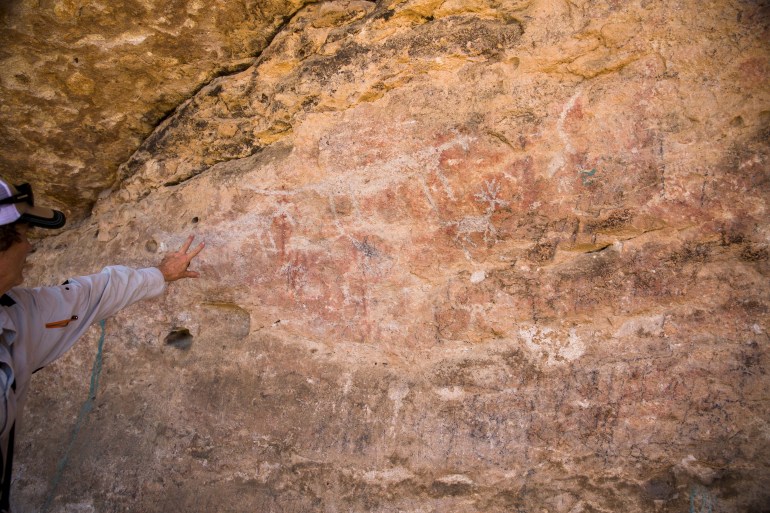Native Americans try to block US move to give land to Rio Tinto
Native American group says US does not own land sought by mining giant for lucrative copper deposits.

Members of Arizona’s San Carlos Apache tribe have filed a property claim in an attempt to regain control over land that the United States government is poised to give to Rio Tinto Ltd for its Resolution Copper mine.
The case ties up Rio Tinto is another legal tussle with native tribes, following the mining giant’s destruction of an Indigenous cave site in Australia last year.
Keep reading
list of 4 itemsRio Tinto’s CEO to quit after anger over Aboriginal cave blasts
Mining giant Rio Tinto vows to protect Australian Indigenous site
Rio Tinto cuts executive bonuses after Australia cave destruction
At the proposed site in Arizona, clashes are becoming more frequent between Indigenous groups and mining companies eager to produce more copper for electric vehicles and other green technologies.
The latest manoeuvre by tribal members opposed to the project asks a court to find that the US government has illegally occupied the land for more than 160 years and has no right to give it to anyone.
The “United States of America does not own that land,” Apache Stronghold, a non-profit organisation comprised of mine opponents, said in a court filing.
The mine could supply a quarter of US copper demand if developed, but eventually destroy the land, known as Oak Flat, or Chi’chil Bildagotee, considered by Native Americans to be the home of religious deities.
Rio’s Resolution Copper subsidiary said it will monitor the case and remains “committed to ongoing engagement with Native American tribes to continue shaping the project and deliver initiatives that recognise and protect cultural heritage.”
Rio and development partner BHP Group Ltd have sought for years to access the underground copper deposit, about 70 miles (113 kilometres) east of Phoenix in the Tonto National Forest.
The US Forest Service, which manages the land, declined to comment.
Land swap
Earlier this month, a leading British local government pension group urged Rio and BHP to clarify how they intend to protect the environment in and around the proposed project.
The Local Authority Pension Fund Forum, a shareholder in both firms, said on January 8 that it had written to them to ask how the project will affect local communities.
The deposit sits below land that belonged to the tribe before the United States existed. An 1852 treaty between US officials and the tribe that is still in force set aside the land for the Apaches’ use.

In 2014, the US Congress and then-President Barack Obama approved a plan to let Rio exchange land it already owns for land above the copper, with the caveat that the swap could not occur until an environmental study was published. The outgoing administration of President Donald Trump plans to publish that study on Friday, clearing the way for the exchange within 60 days.
Tribal members have also filed a lawsuit seeking to block the study’s publication.
The claim, formally known as a lien, is essentially the next line of defence if that lawsuit fails. Last year, the US Supreme Court upheld 19th-century land treaties between Washington and Oklahoma tribes, a precedent that could bolster the Apaches’ lien request.
Rio has promised to seek the tribe’s consent for the mine. Even if Rio were to gain control of the land, the company still needs federal permits, a process that both sides acknowledge could take years.
The company has also been at the centre of another controversy over native lands, in Australia.
Last year, Rio triggered public and investor uproar after destroying the 46,000-year-old Juukan Gorge rock shelters in Western Australia for a mine extension. The site is considered sacred by Aboriginal tribes.
Opposition to the company’s move led to the resignation of its chief executive and two deputies.